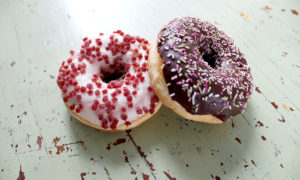Estimated reading time: 2 minute(s)
As most of you know, I was diagnosed with celiac disease when I was a child, which is why I’ve spent many years studying gluten and experimenting with its effects on the body and what the alternatives are. Although it might be hard for some to believe- you can have a variety of delicious options living with a gluten-free diet. In fact, if you do it right, you’ll never miss bread again.
90% of the world’s natural foods do not contain gluten, so it shouldn’t feel complicated to follow a gluten-free diet
Should I stop eating gluten?
There are many people who freely choose to stop eating gluten even though they aren’t celiac and don’t have any predispositions to it. Why? Well, there are a variety of reasons but a lot of it has to do with the quality of wheat consumed today as it is nothing like what our ancestors ate.
According to data from World Wheat Facts And Trends, 99% of the wheat we consume today comes from a hybrid version of ancestral wheat, which makes its molecular structure unrecognizable to our immune system thus why it is difficult for our system to digest.
As soon as you stop eating gluten you will feel its effects. After just a few days you will feel less bloated and inflamed and you will have fewer stomach issues
Effects of Gluten
Eating foods that contain gluten (mainly wheat, rye, barley, and spelt) can have very uncomfortable side effects.
- Inflammation. In 100% of people, the presence of gliadin and bacteria induce zonulin secretion which increases intestinal permeability which introduces foreign antigens to the immune system. The body reacts to this by activating its immune system to defend itself against the aggressors.
- Abdominal strain
- Gas
- Stomach pains
- Nausea
- Vomiting
- Diarrhea
- Loss of appetite
- Anemia
- IBS
- Fatigue
- Weight loss
- Anxiety
- Osteoporosis
- Mood swings
- Skin problems
- Increases the perception of pain: Check out this interesting study by Nature.
Do you still feel like you couldn’t live without bread and cookies?
If you still have doubts, I encourage you to just make some small changes to your diet. You will begin to see that not only is it possible to live without wheat but, that the alternatives are just as delicious. Better yet, you won’t have the guilt, AND you will feel healthier and happier.
A warning: beware of gluten-free products on supermarket shelves. Oftentimes they are gluten-free but, they contain sugar, bad fats, other harmful additives…
Gluten-free labels don’t mean healthy
Homemade is always best in my book. Follow these recipes and see how easy it is!
Toast: Sourdough Toast (long fermentation) and Buckwheat Bread.
Spaghetti: Zoodles
Cookies: Homemade Oat Cookies
Pastry: Banana Pancakes
Potato Chips: Kale Chips

Traditional Pizza: Cauliflower Pizza
Traditional Breakfast Cereal: Oatmeal
Couscous: Quinoa Tabbouleh
Bread Crumbs: Grated Nuts
Wheat flour is the key ingredient in recipes for cakes, cookies, and other desserts and snacks but, don’t be fooled it isn’t essential. We can substitute classic wheat flour with almond, oat, buckwheat, tapioca, or coconut flour. These are just some of my favorites, although there are many more options. Play around and experiment because these alternative flours can radically change the taste of our recipes. Be as innovative as you’d like!
Oh, make sure to check that your Oats really are gluten-free 😉













